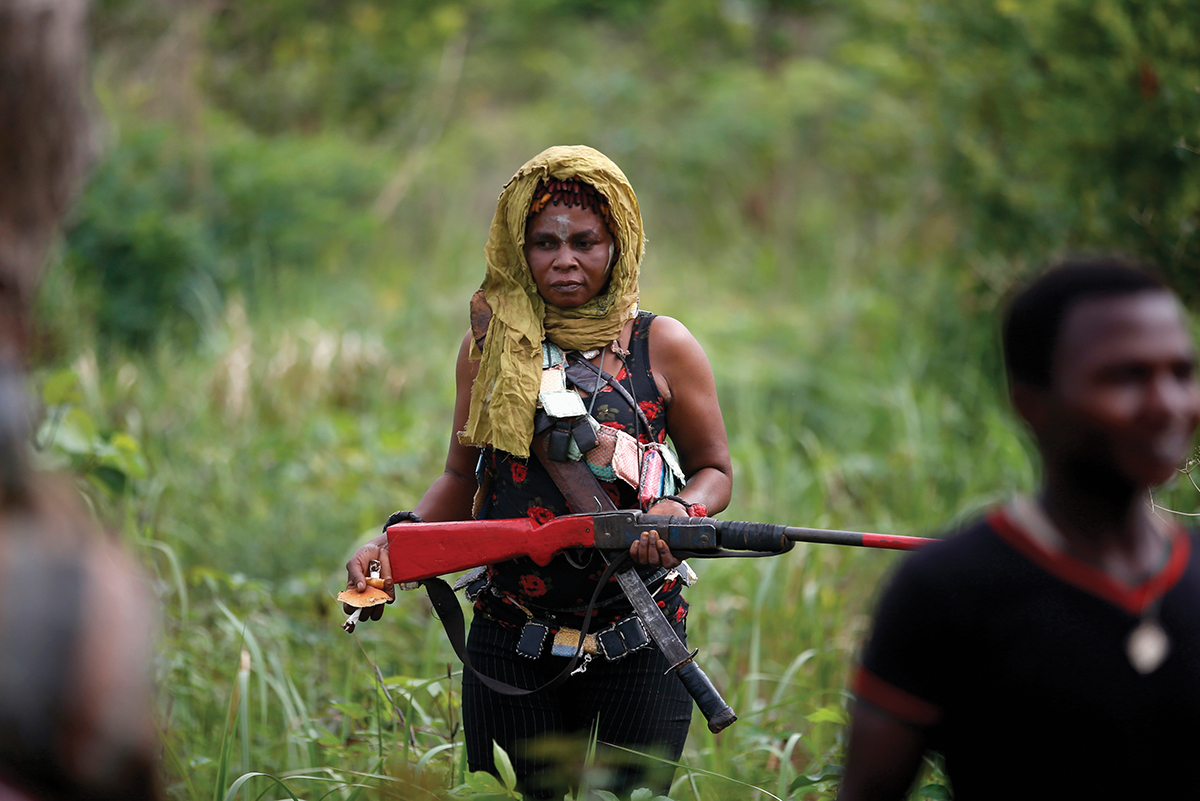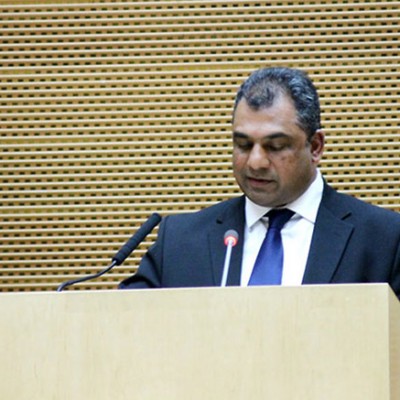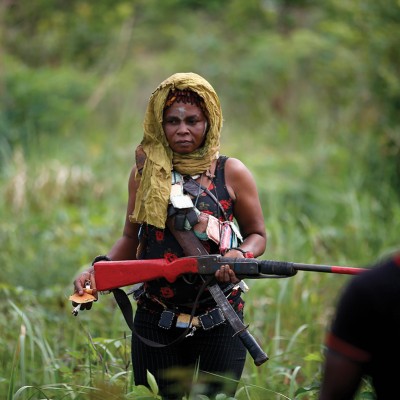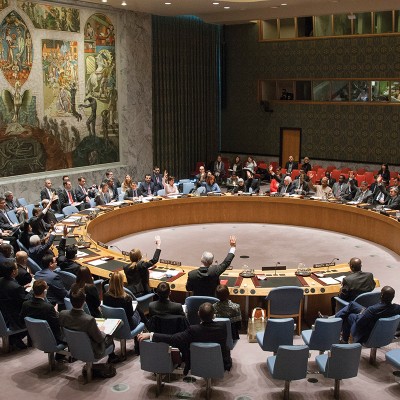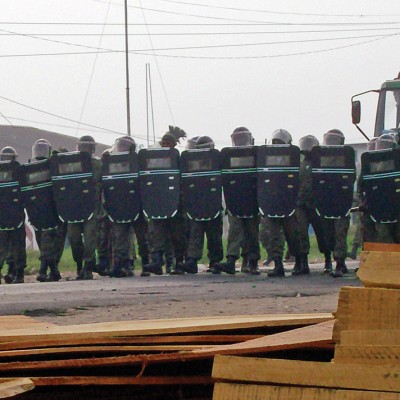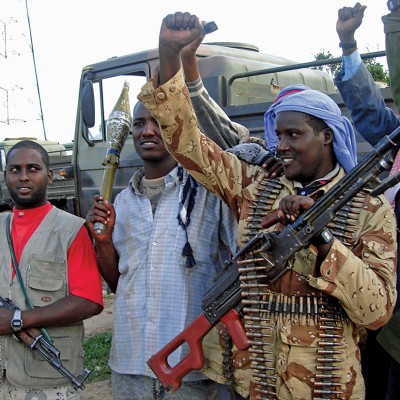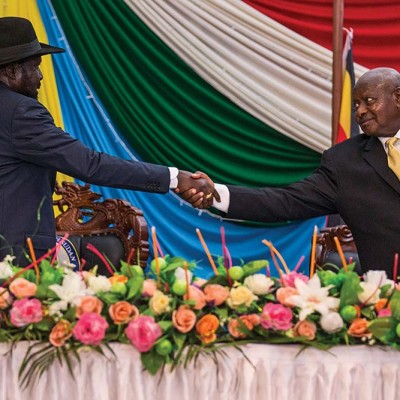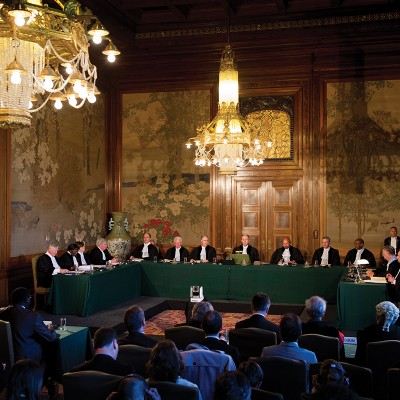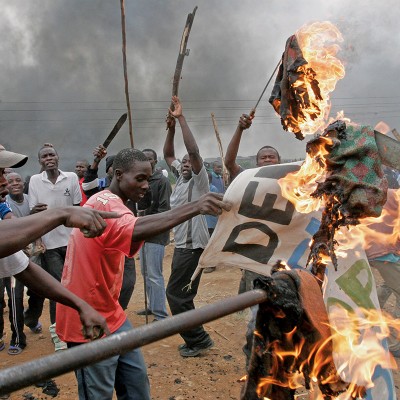Is the portrayal of women as peaceful and men as violent appropriate? This problematique needs to be explored, as the ever-increasing presence of women in conflicts across Africa and elsewhere demonstrates that war is not an exclusive male bastion and women are not necessarily always peaceful. Despite literature on women’s participation in war,1 their role remains undervalued. The battlefield continues to be understood and analysed as a male bastion. Female combatants remain on the margins of war-related discourses. War is understood as a masculine endeavour for which women may serve as victim, spectator or prize.2
Conventionally, women’s engagement with violence has been dubbed as unnatural, abnormal, perverse or distorted. Even today, women continue to be studied largely as peacemakers and peace-lovers, despite female combatants attracting significant attention and scholars increasingly scrutinising women’s engagement with violence for centuries now.3 There is an increasing trend in which women’s participation is analysed as “elements of the politics and practices of war and peace, rather than cases of gender deviance, false consciousness or globalized militarization”.4 This article makes the case that female combatants need much more attention than they currently receive. It further argues that their engagement with violence brings for them a unique mixed experience of empowerment and exploitation. It contends that there is a need to challenge the asymmetrical discourse on conflict and peace, by positioning gender at the centre and factoring voices from the margins to revolutionise the prevalent discourse.
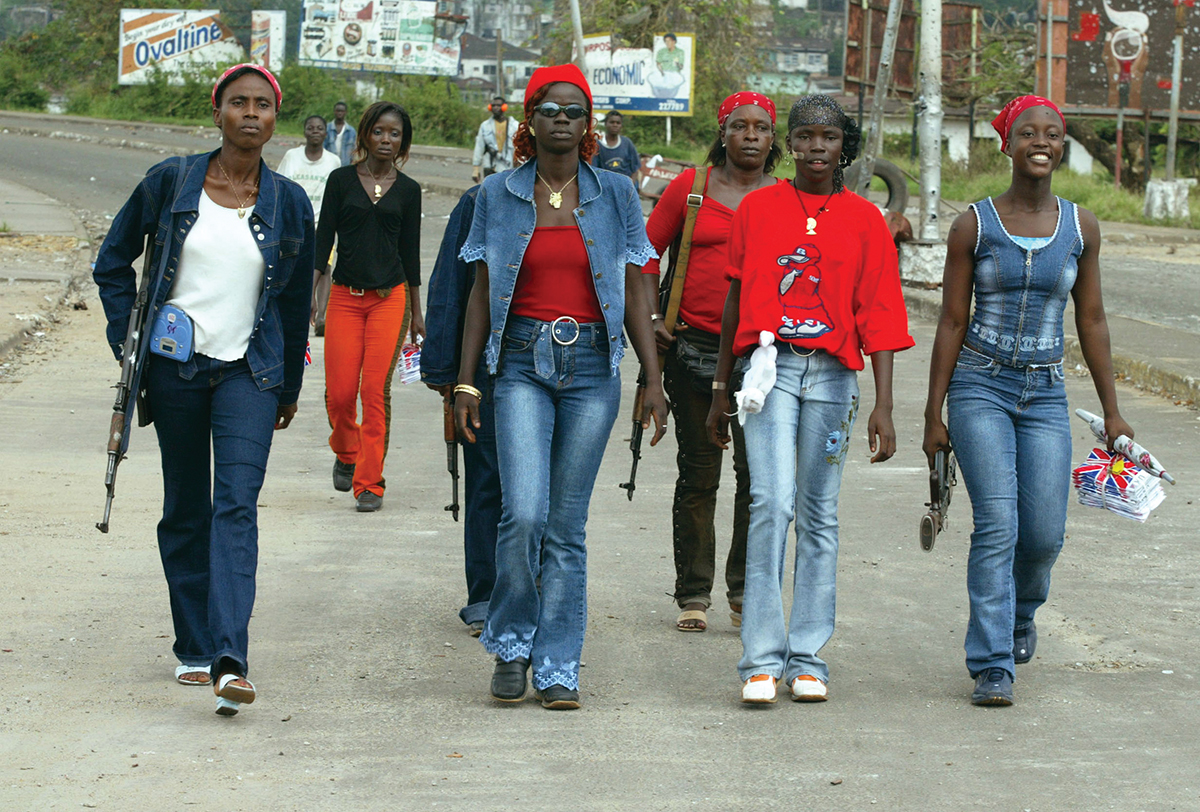
Making Conflict
Examples are scattered across and beyond Africa of women becoming indispensable for non-state armed groups to wage their wars against states, for reasons ranging from secession to greater autonomy. Most of these wars are fought not in battlefields, but around human habitations. The cases of Angola, Burundi, Liberia, Mozambique, Rwanda, Uganda, Sierra Leone, Democratic Republic of the Congo, Sri Lanka, Nepal and India are a few examples where women’s participation in conflict and violence is evident. For example, in the Eritrean People’s Liberation Front, female fighters made up at least 25–30% of the total strength.5 In Sierra Leone, the number of women in the various forces has been estimated at 10–30%.6
In many conflict situations, women play their socially ascribed gender role and even assume new responsibilities such as fighting, which are traditionally attributed to men. They care for, nurture and feed male militants and thus facilitate armed conflicts. In some cases, they are directly engaged in combat – such as in Sierra Leone, Liberia, Nepal, Sri Lanka and the Maoist movement in India. Women are majorly “wives, girlfriends, and mothers, waiting for their soldiers to return and caring for wounded”7 – but, in many conflict situations, they are also involved in direct combat where they fight, kill and get killed.8 Women directly or indirectly aid violence by performing an array of activities such as nursing, spying, fund raising and fighting, and as suicide bombers.9 Female fighters have assumed leadership roles – such as in Liberia, where some of the well-known female leaders include Martina Johnson (National Patriotic Front of Liberia), Ruth ‘Attila’ Milton (Liberia Peace Council) and ‘Black Diamond’ (Liberians United for Reconciliation and Democracy).10 Women have also served on all-female units, blown up buildings and assassinated political leaders – as has been quite visible in Sri Lanka. The civil war in Mozambique, fought between the Resistencia Nacional de Mocambique (RENAMO) and Frente de Libertacão de Mocambique (FRELIMO), witnessed women’s presence on both the sides. Here women assumed multiple roles – as fighters, trainers, spies, recruiters, medics, arms experts, labourers and captive ‘wives’.11 Similarly, in northern Uganda, women not only were fighters and ‘wives’ of the Lord’s Resistance Army commanders, but were also highly visible in supportive roles such as cooking, looting and smuggling weapons.
What drives women to be involved in wars is complicated. The enlistment is prompted by mundane and contingent factors, partly endogenous to the conflict situation and partly to the pre-conflict situation. There are women who commit violence voluntarily, and there are others who are forced to commit violence. Taking into account the wide spectrum of women’s involvement in violence, Cunningham identifies several factors behind their involvement: domestic/international enforcement, conflict and social dislocation.12 For Bloom, women are prompted by five Rs: revenge, redemption, relationship, respect and rape.13 My study of several South Asian conflicts, including Nepal, Sri Lanka and India (Kashmir, Manipur, Punjab and the Maoist movement scattered across many Indian states), reveals that the motivations include: nationalist sentiment and identification with an ideology, prompting women to sacrifice in person (as a suicide bomber or fighter) or to sacrifice a family member (by sending male members to fight); revenge (to avenge the killing of kin or a personal suffering, such as rape); relationship (close association with a person supporting the conflict); and advantages (prospects of social or economic gains).14
The ‘protection discourse’ has played a key determinant in legitimising women’s invisibility in war. This discourse is based on the assumption that men fight wars to protect women; hence, the ‘protector’ and the ‘protected’ cannot be equal.15 What would be the equation when the protected assumes the role of protector – that is, when women engage in fighting? In this situation, do women and men share an equal relationship? The answer is no. Men and women share unequal relationships, both during times of peace and war. Women not only bear the consequences of violence unequally as protected persons, but inequality walks alongside when they transgress the traditionally imposed boundaries and become protectors.
Suffering in Conflict
For female combatants, war brings in its trail a complex set of experiences that prove liberating as well as suffocating. During armed conflict, female combatants may experience momentary emancipation from patriarchal social order, or they may continue confronting gender-based discrimination with varying intensity, or, as happens in most cases, simultaneously enjoy limited liberation from the pre-conflict patriarchal setup as well as suffer gender-specific victimisation. The experiences of women can reach an extreme of being liberated to another extreme of being highly exploited, or there may be simultaneous experiencing of both in varying degrees.
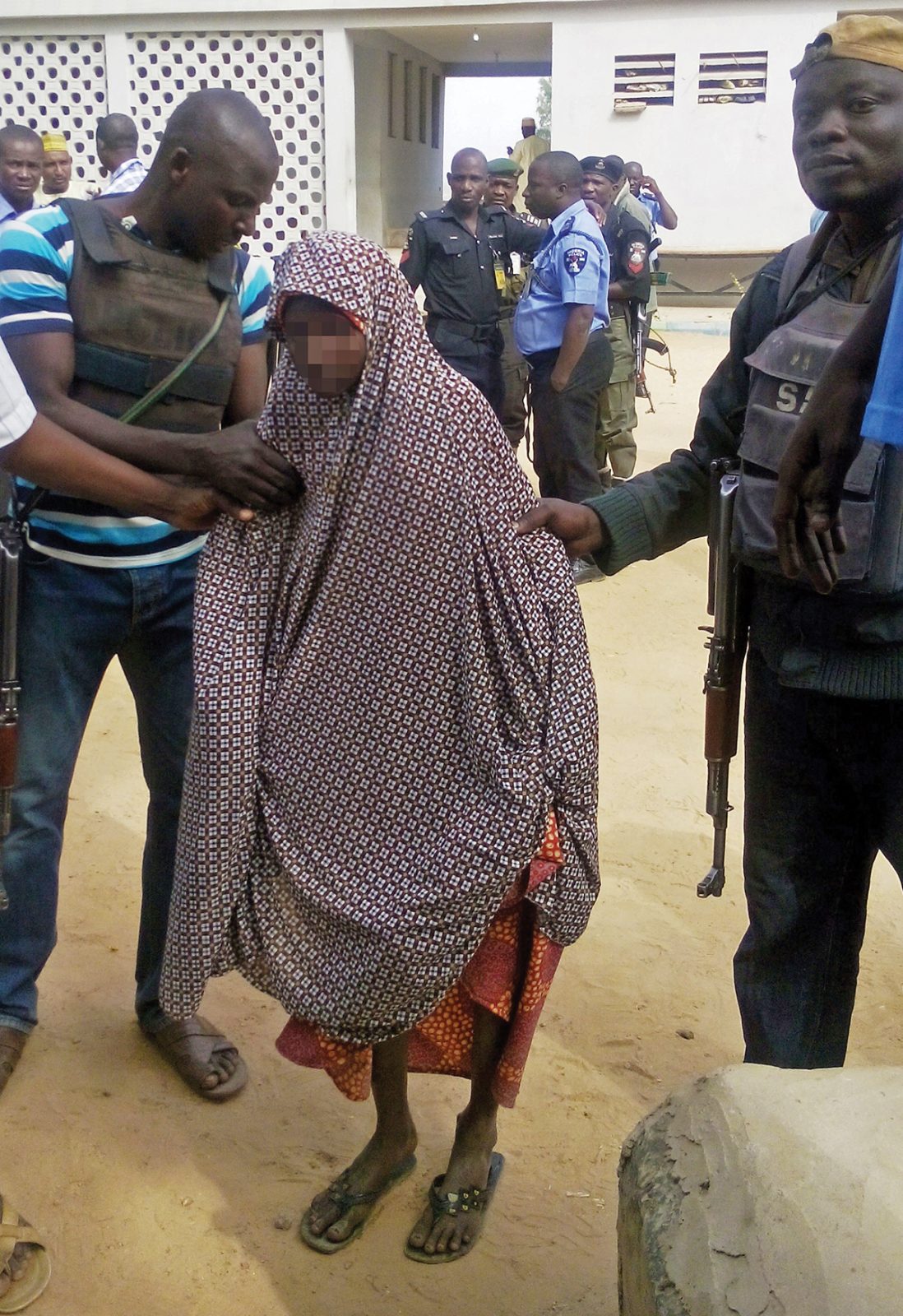
Conflict situations may provide women an opportunity to enjoy greater freedom of choice. They may enjoy some semblance of parity and power, since not all experiences of involvement in conflict-making are negative. They may enjoy unprecedented freedom, since war “destroys the patriarchal structures of society that confine and degrade women”.16 But this is only one side of the coin. Female combatants suffer in conflicts in specific ways. They are used and abused, even as combatants themselves. By becoming agents of violence, women do not necessarily become immune to gender-based discrimination. Immunity to patriarchy is not a habitual outcome of transgression of the societal gendered norms. Female combatants continue to remain susceptible to patriarchal control, with varying intensity – patriarchy is deeply embedded in society and social existence globally. The spatial and situational variance may not necessarily weaken the patriarchal strangle. The incessant reinforcement of discriminatory patriarchal values ensures the superior position of men before, during and after conflict. Examples of such abuse are scattered across conflict situations. Female fighters in Sierra Leone who assumed command positions were also mostly forced to be ‘wives’ to male fighters. These women had to suffer sexual violence, rape and gang rape, even while holding higher ranks.17 In northern Uganda, women were visible as fighters, in supportive roles and also as sex slaves and captive ‘wives’. In her study of Liberia, Specht argues that gender equality remained a dream for most female fighters, as male commanders not only led them but also demanded sexual favours.18 A similar situation has also been noted by the author in her study of the Maoist movement in India.19

Women warriors suffer violence not only at the hands of the enemy, but also at the hands of their fellow group. Many female combatants adopt masculine attitudes and values to become a proper fit in a conflict. While these women are encouraged to become ‘masculine’, they are expected to continue retaining feminine qualities. They are therefore caught in a difficult situation, wherein they aspire to become ‘like men’ to attain equality, and even are expected to do so, but are simultaneously expected to continue retaining their feminine qualities to sustain the conflict. Some women warriors claim that they ‘feel just like men’ during the period of conflict – but in a patriarchal set-up, there is a difference between ‘feeling like men’ and ‘being men’.20 In most cases, patriarchy does not cease to operate, even when equality is a projected goal of the movement leaders. Although women fight shoulder to shoulder with their male counterparts, they suffer in gender-specific ways, including experiences of sexual violence. They are the perpetrators of violence as combatants – but at the same time, they are the perpetrated too, and confront physical as well as sexual abuse at the hands of their male counterparts.
Suffering in Peace
Patriarchal ideology may get partially diluted during the conflict, to resurface as soon as violence subsides and peace attempts are initiated. This continuum of the patriarchal structure, with only occasional ruptures, remains a harsh reality for female combatants. For them, conflict as well as peace situations “are mere stages in a sequence of conditions linked together to produce a condition for the continuation of structural gender inequality and violence against women”, argues Lahai in his study of Sierra Leone.21 His contention that the pre-war patriarchal system and social hierarchies, along with the Sierra Leonean-specific hetero-gender normative narratives prepared the ground for war, determined women’s position in the warring factions, and undermined all attempts “to use gender-aware pragmatic thinking to situate gender equality within the discourse of conflict transformation”, can be applied to many other conflicts in Africa and beyond.
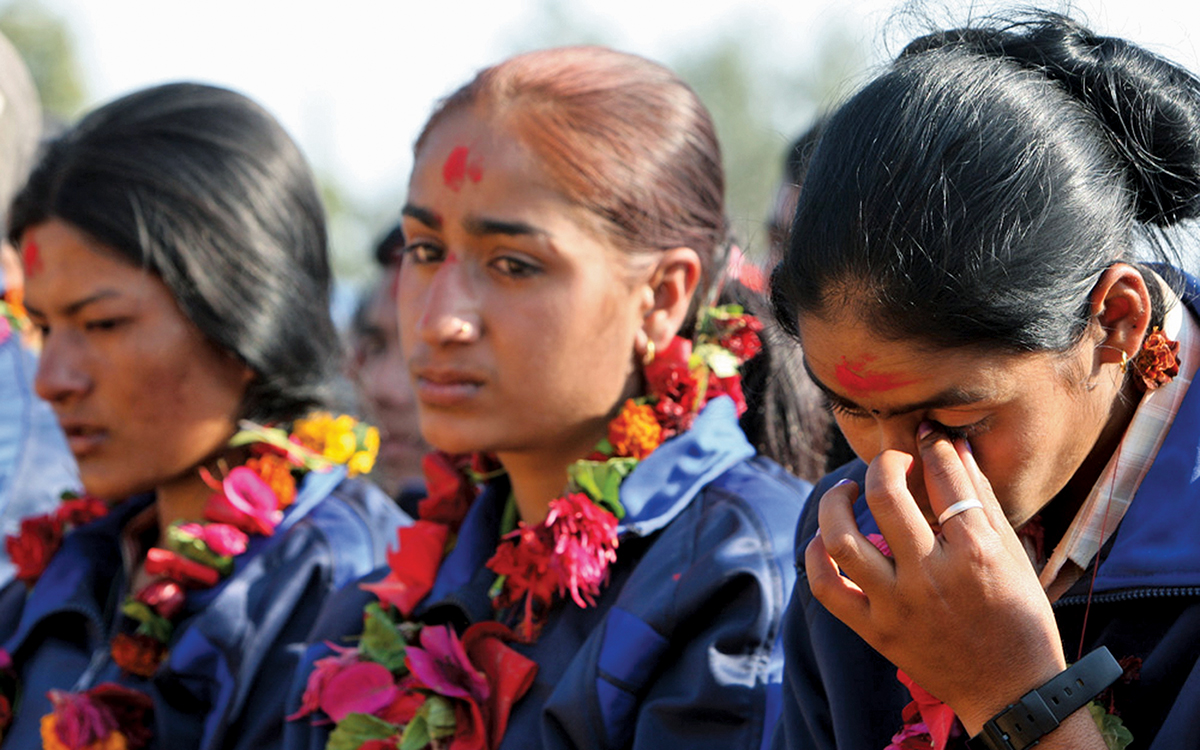
Inequality persists beyond the confines of conflict. Once violence subsides, women are no longer visible, even though they played a significant role in sustaining the conflict. Is it not a fact that while the stories of success in terms of women’s inclusion in post-conflict reconstruction programmes are negligible, those of failures are epic? Once violence recedes, women are relegated to the private domain, with no major role in the peace process. The undermining of the gender component in conflict and peace processes strengthens, legitimises and perpetuates patriarchy. Conflicts across the globe are strikingly similar in this context – women’s visibility in conflict-making and invisibility in peacemaking. Female combatants do not usually constitute part of formal peace talks to address conflicts. A major reason for this is the warlords – mostly men – do not provide a place for their female cadres to participate in peace talks. This exclusion is largely justified on flimsy grounds. Informal interactions with scores of male ex-combatants reveal how they perceive women as mostly apolitical and apathetic.22 Many argue that women do not understand the intricacies of peace negotiations, while for others, women are saved from the ‘dangers’ of peacemaking. Some even claim that women are incapable of making political decisions. Simply put, women are used during violence and abandoned after violence. Female combatants become the victims of selective amnesia, wherein neither their role in conflict is recognised nor are they considered equal stakeholders in peacemaking processes.
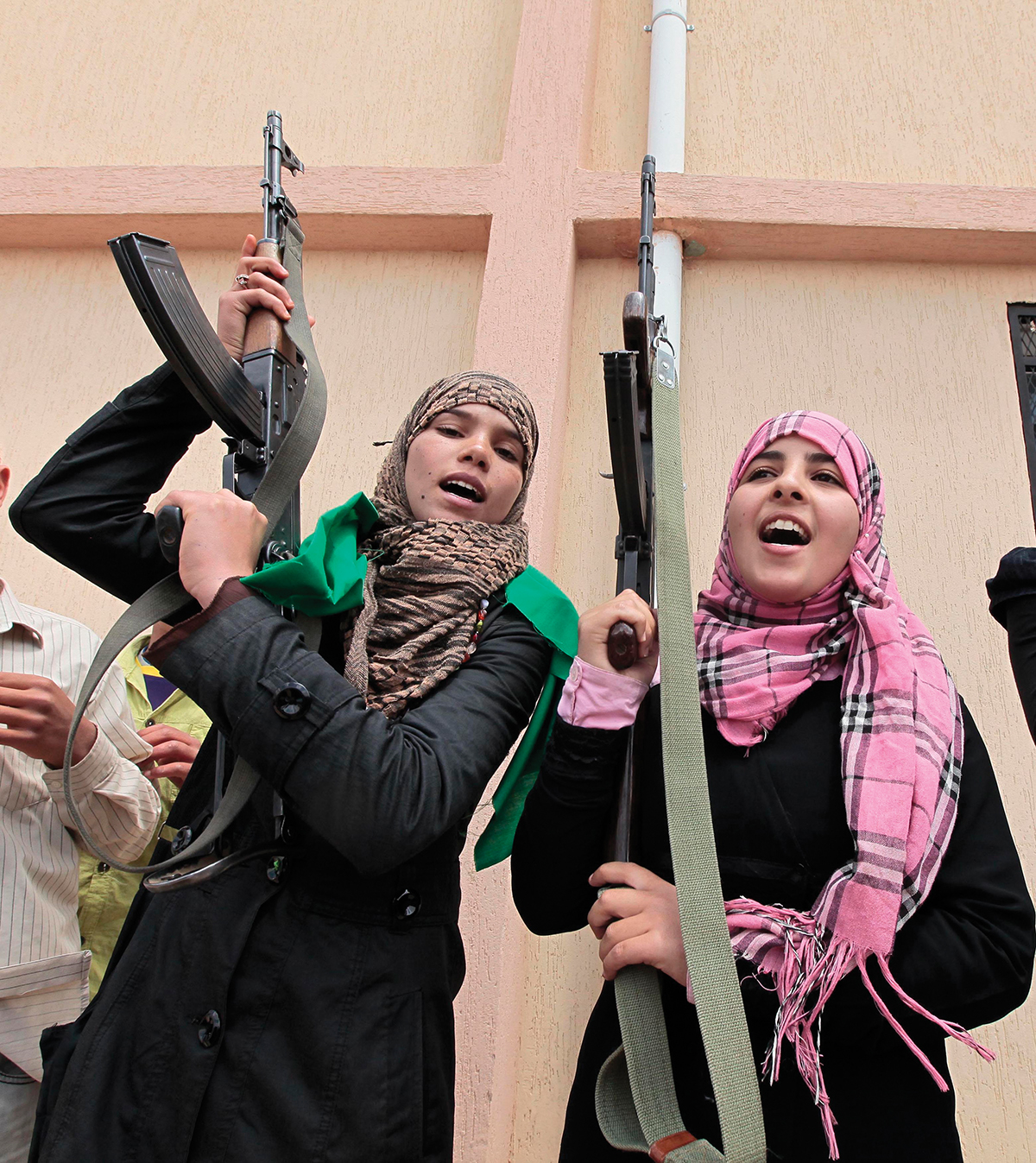
The post-conflict situation brings in its wake a series of gender-specific problems for female ex-combatants – ranging from physical to psychological, social to cultural and economic to political – which they have to confront on a short-term and long-term basis. The euphoria of a violent movement – and, at times, the accompanying glorification of women as the backbone of the movement and their accidental empowerment – are replaced by neglect, apathy and stigmatisation. In the post-conflict situation, female ex-combatants are triply alienated – by ‘their’ group, by the state and by the community. Patriarchy not only survives during the conflict, but is also reinforced further in the post-conflict situation. State and international agencies discriminate against women while planning and implementing disarmament, demobilisation and reintegration programmes. For example, in Sierra Leone and Angola, women warriors were tagged merely as dependents, and consequently were deprived of the benefits extended to male ex-combatants. The problems of these women are further compounded by a lack of support from the community. While their group neglects them and the state is apathetic, society stigmatises them. For female ex-combatants, life is never the same, as they have to negotiate their space in a highly prejudiced society. It becomes a long, strenuous process and, at times, unattainable goal. Most of these women are forced to reaccept their traditional status in society, but even this is not easy. They are stigmatised as violent and sexual – both unacceptable traits of a ‘normal’ woman. In her study of female ex-combatants of the military wing of the African National Congress in South Africa, Axelsson contends that even though South Africa is considered a success story as far as women’s inclusion in post-apartheid political processes is concerned, female ex-combatants continue to remain in a disadvantageous position. She argues that in the South African context, women who “defy dichotomies of masculinity/femininity, combatant/civilian, perpetrator/victim and war/peace” are “positioned in systemic disadvantage by their gender, the silence surrounding them obscures their hardship and precludes them from seeking adequate assistance”.23

Conclusion
Any partial collapse of the patriarchal order in times of conflict is, at the most, incidental, with no major gender implications for the reordering of the social structure in the post-conflict situation. It is naïve to claim that the participation of women in combat and violence provides an opportunity to challenge the patriarchal stronghold. Women’s involvement in conflict is not as emancipating as proclaimed, as insidious patriarchy is reinforced in multiple ways in both conflict and post-conflict situations. Both conflict and peace processes continue to be discriminatory for all categories of women, including female combatants.
Female combatants’ exclusion from peace and reintegration processes is universal. It is for this reason that many unnerving questions need the sustained attention of scholars: Are these women who aid conflict incapable of aiding peace? Are they competent to make war, and incompetent to make peace? Is a rebel movement a mass movement where women should be necessarily involved, and peacebuilding an elite, male privilege in which women combatants can be neither actors nor beneficiaries? Is women’s exclusion from peace processes mere negligence, or a schema crafted by the patriarchal sociopolitical structure?
Endnotes
- For instance, Goldstein, in his work on war and gender, documents the role of female combatants in the African continent. Goldstein, Joshua (2003) War and Gender: How Gender Shapes the War System and Vice Versa. Cambridge: Cambridge University Press.
- D’Amico, Francine (1998) Feminist Perspectives on Women Warriors. In Lorentzen, Lois Ann and Turpin, Jennifer (eds) The Women and War Reader. New York: New York University Press, p. 119.
- For instance, Jones, David E. (1997) Women Warriors: A History. Washington: Brassey’s; Salmonson, Jessica Amanda (1991) The Encyclopedia of Amazons: Women Warriors from Antiquity to the Modern Era. New York: Paragon House.
- Sylvester, Christine (2010) Tensions in Feminist Security Studies. Security Dialogue, 41 (6), p. 609.
- Klingebiel, Stephan; Gärke, Inge; Kreidler, Corinna; Lobner, Sabine & Schütte, Haje (1995) Promoting the Reintegration of Former Female and Male Combatants in Eritrea. Berlin: German Development Institute.
- Mazurana, Dyan and Khristopher Carlson (2004) From Combat to Community: Women and Girls of Sierra Leone, Washington DC: Women Waging Peace Policy Commission.
- Carter, April (1998) Should Women be Soldiers or Pacifists? In Lorentzen, Lois Ann and Turpin, Jennifer (eds), op. cit., pp. 33–41.
- Shekhawat, Seema (ed.) (2015) Female Combatants in Conflict and Peace: Challenging Gender in Violence and Post-Conflict Reintegration. London: Palgrave Macmillan.
- Alison, Miranda (2004) Women as Agents of Political Violence: Gendering Security. Security Dialogue, 35 (4), pp. 447–463.
- Ellis, Stephen (2007) The Mask of Anarchy: The Destruction of Liberia and the Religious Dimension of an African Civil War. London: Hurst.
- McKay, Susan and Mazurana, Dyan (2004) Where are the Girls? Girls in Fighting Forces in Northern Uganda, Sierra Leone and Mozambique: Their Lives During and After War. Quebec: Rights and Democracy.
- Cunningham, Karla J. (2003) Cross-regional Trends in Female Terrorism. Studies in Conflict & Terrorism, 26 (3), p. 172.
- Fillion, Kate (2011) ‘In Conversation with Mia Bloom’, Maclean’s, 24 January, Available at: <http://www2.macleans.ca/2011/01/24/macleans-interview-mia-bloom/> [Accessed 16 March 2012].
- Shekhawat, Seema (2014) Gender, Conflict and Peace in Kashmir: Invisible Stakeholders. New York: Cambridge University Press.
- Wilcox, Lauren (2010) Gendering the Cult of the Offensive. In Sjoberg, Laura Gender and International Security: Feminist Perspectives. London: Routledge, p. 75.
- Turshen, M. (1998) Women’s War Stories. In Turshen, M. and Twagiramariya, C. (eds) What Women Do in Wartime: Gender and Conflict in Africa. London & New York: Zed Books, p. 20.
- Coulter, Chris (2008) Female Fighters in the Sierra Leone War: Challenging the Assumptions? Feminist Review, 88 (1), pp. 54–73.
- Specht, Irma (2006) Red Shoes: Experiences of Girl-combatants in Liberia. Geneva: International Labour Office, Programme on Crisis Response and Reconstruction.
- Shekhawat, Seema and Saxena, Chayanika (2015) Victims or Victimizers? Naxal Women, Violence and the Reinvention of Patriarchy. In Shekhawat, Seema (ed.) Female Combatants in Conflict and Peace: Challenging Gender in Violence and Post-conflict Reintegration. London: Palgrave Macmillan, pp. 117–131.
- Personal interviews with female combatants from Nepal, Sri Lanka and India, from 2011 to 2015.
- Lahai, John Idriss (2015) Gendering Conflict and Peace-building in Sierra Leone. In Shekhawat, Seema (ed.) op. cit., pp. 132–148.
- Interactions with male ex-combatants from India (Kashmir and Maoists movement) and Nepal, from 2011 to 2015. See Shekhawat, Seema and Pathak, Bishnu (2015) Female Combatants, Peace Process and the Exclusion. In Shekhawat, Seema (ed.) op. cit., pp. 53–68.
- Axelsson, Sofia (2015) Gendered Struggle for Freedom: A Narrative Enquiry into Female Ex-combatants in South Africa. In Shekhawat, Seema (ed.) op. cit., pp. 167–184.

